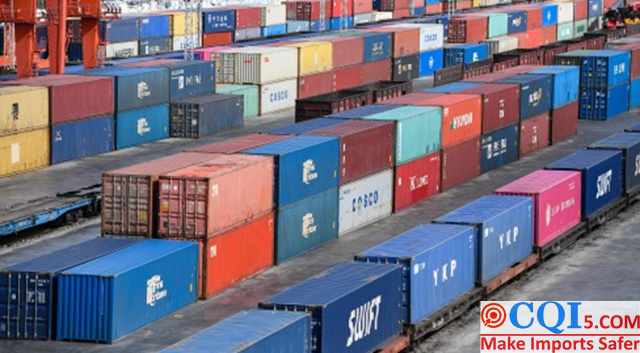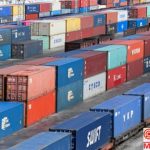Impact On The Industry Chain And Supply Chain After The Covid-19
The impact of the COVID-19 on the industry chain and supply chain is huge. The IT revolution and globalization have created a comprehensive logistics revolution and global supply chain management, resulting in a new division of labor, called international division of labor and intra-product division of labor. In the era of globalization, the global industrial chain and supply chain can achieve zero inventory and timely delivery. Imagine that in such an era, has anyone thought about the COVID-19 virus pandemic? Ever thought about the US-China trade war, where the US imposed a 25% tariff rate on Chinese exports to the US? Ever thought about reverse globalization? The answer is no. So we can see the impact of the COVID-19 on the industry chain and supply chain.
The first aspect of the impact is that the security of the global industrial chain and supply chain becomes very important. The intervention of governments around the world in industrial chains and supply chains under the epidemic is likely to exceed the intervention of governments in industrial chains and supply chains in the past 60 years.
The second aspect is the possibility of adjustment of the international triangular division of labor. For East Asia, the first to stabilize from this COVID-19 epidemic was China, then Japan, South Korea, and then the ASEAN 10 countries. When the Asian COVID-19 epidemic stabilized, the supply chain encountered the problem that in the past, East Asian countries provided manufacturing and labor for the world, and China relied on the production network in Europe and the United States for technology, orders and many key components, but the COVID-19 epidemic caused the disruption of the production network in Europe and the United States. As a result, the manufacturing in these Asian countries was then hit hard.

Forecast Of Changes In Global Supply Chain After The Covid-19
First, after the COVID-19 epidemic, China has adopted the approach of a major domestic Chinese cycle to expand domestic demand and imports. In this case, orders may move east as well as the supply chains and innovation . According to 2020 global data, there is now a trend for the global innovation landscape to move eastward. Services are also likely to move eastward. In the first 11 months of this year, 78% of China’s actual foreign investment was in service enterprises. There is also likely to be an eastward shift of capital – and a clear trend toward greater financial and monetary cooperation in East Asia.
Second, the impact of big data on the supply chain has the potential to make the supply chain shorter, more decentralized, and more localized. At the same time the supply chain may become more resilient, and more able to meet the pain points of niche needs. The supply chain of medicine, the supply chain of health and the supply chain of artificial intelligence digitalization after the COVID-19 epidemic is likely to be the industry with the best market growth.
Third, there will be new changes in productive services, living services and public services. 2020 is not only a closing of the past five years of development for China, but also the opening of the next five years. In the next five years, China will enter a new stage of development, where the high growth of the past 40 years is likely to shift to the high quality development of the next 30 years. And in the next 5 years, innovation is likely to become the most important factor for China’s development. Therefore, China will continue to improve the innovation environment, investment environment, business environment and market environment in the next 5 years in order to adapt to the changes in the supply chain and industrial chain.
Fourthly, China has established the policy of expanding domestic demand since the COVID-19 epidemic, which means to smooth domestic production distribution, circulation and consumption. In this case, China will increase imports, increase orders, which means increase demand, and China’s double cycle will actually build a new system of higher level of open economy.
What Will China Do After The Covid-19 ?
The first fact, China’s strategy of promoting a double loop, will China’s tariff rates fall further? Will China’s non-tariff measures be further eliminated? Will China’s trade and investment and facilitation levels further improve? Will China’s services market access and opening be further expanded? The answers to all these questions can actually be seen from the facts.
The second fact, after the COVID-19 epidemic China in the modernization of rules and regulations, management standards, is not a further alignment with the high international standards of rules? This fact is measurable, that is, under the new pattern of double-loop, will China’s institutional opening and institutional reform be accelerated?
The third fact is, will China be more open to innovation, open cooperation and open sharing in science and technology, talent innovation, etc. in the future, or will it go closed?
So we can see that in the next 5 years after the end of the COVID-19 epidemic new changes will happen in China, new changes will happen in the world, and new changes will happen in the global industrial chain and supply chain. In addition, it is also important to pay attention to the psychological trauma of the COVID-19 epidemic on people.
In terms of the international community, it is necessary not only to do a good job with vaccines, drugs, respirators, protective clothing and other equipment, but also to deal with the post-epidemic syndrome and treat the psychological trauma caused by the COVID-19 epidemic in the hardest hit areas of the world. This issue should be given high priority and a full range of international cooperation should be considered.

CQI5 is committed to providing importers worldwide with product quality inspection services that far exceed those of our peers. If you are planning to import or have imported from China or Southeast Asian countries, please contact us cs’@’cqipro.com to learn more about how we can make your imports safer.
Disclaimer:
CQI5 article information from the Internet and contributions, the copyright of which belongs to the original author, and only represents the views of the original author. This website is only responsible for sorting out, typesetting and editing the articles, reproduced for the purpose of spreading more information, does not imply that it endorses its views or proves the truthfulness, completeness and accuracy of its content, and therefore does not assume any legal responsibility.
The information contained in this article is for reference only and is not intended as direct advice for decision-making.
If we inadvertently violate your copyright, please inform us, after verification, we will immediately correct or delete the content according to the requirements of the copyright holder, thank you! Contact, email: copyright@cqipro.com
This website has the final right to interpret this statement.
Welcome to reprint, Please be sure to keep information complete.






